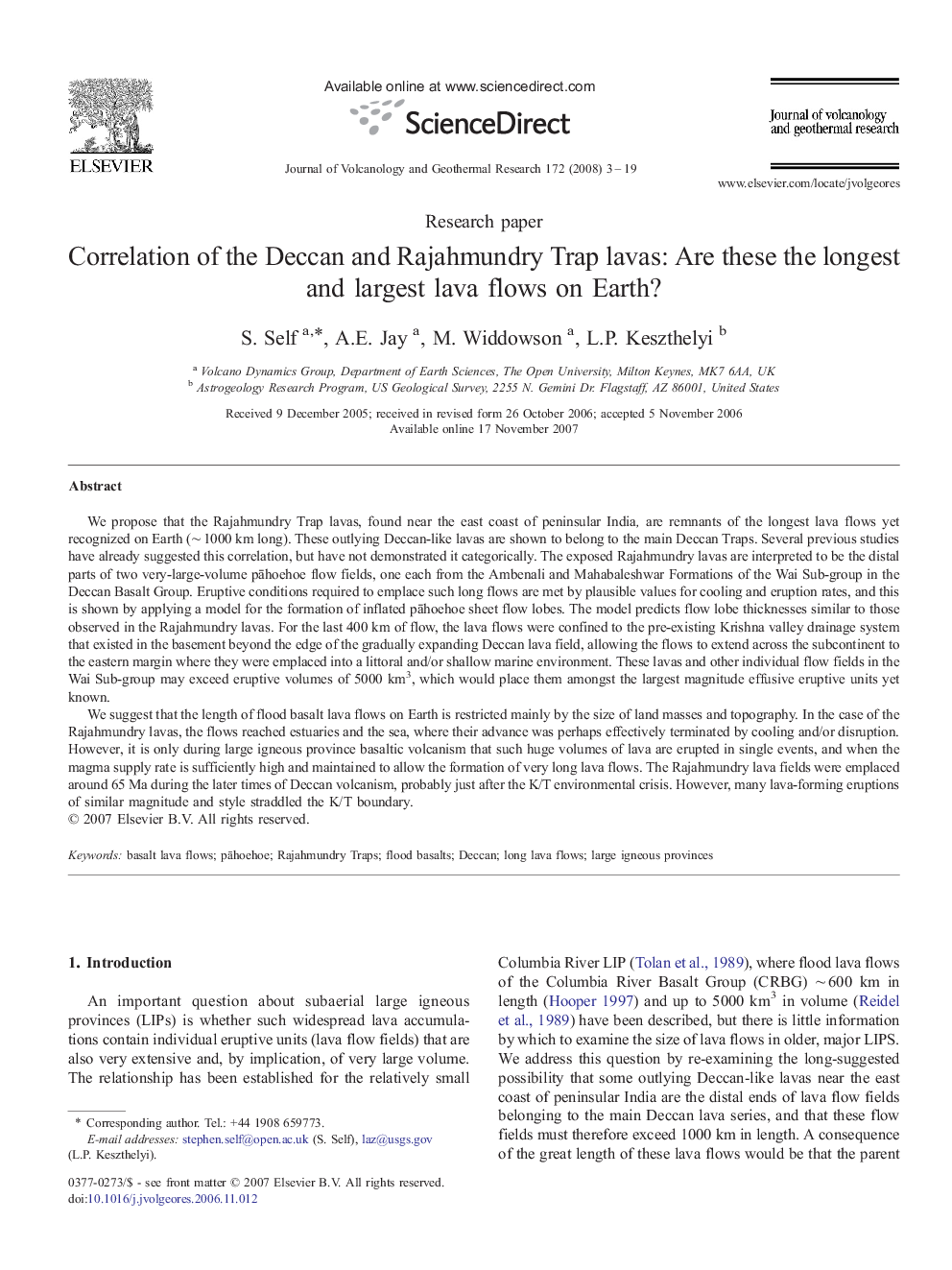| کد مقاله | کد نشریه | سال انتشار | مقاله انگلیسی | نسخه تمام متن |
|---|---|---|---|---|
| 4714790 | 1638450 | 2008 | 17 صفحه PDF | دانلود رایگان |

We propose that the Rajahmundry Trap lavas, found near the east coast of peninsular India, are remnants of the longest lava flows yet recognized on Earth (∼ 1000 km long). These outlying Deccan-like lavas are shown to belong to the main Deccan Traps. Several previous studies have already suggested this correlation, but have not demonstrated it categorically. The exposed Rajahmundry lavas are interpreted to be the distal parts of two very-large-volume pāhoehoe flow fields, one each from the Ambenali and Mahabaleshwar Formations of the Wai Sub-group in the Deccan Basalt Group. Eruptive conditions required to emplace such long flows are met by plausible values for cooling and eruption rates, and this is shown by applying a model for the formation of inflated pāhoehoe sheet flow lobes. The model predicts flow lobe thicknesses similar to those observed in the Rajahmundry lavas. For the last 400 km of flow, the lava flows were confined to the pre-existing Krishna valley drainage system that existed in the basement beyond the edge of the gradually expanding Deccan lava field, allowing the flows to extend across the subcontinent to the eastern margin where they were emplaced into a littoral and/or shallow marine environment. These lavas and other individual flow fields in the Wai Sub-group may exceed eruptive volumes of 5000 km3, which would place them amongst the largest magnitude effusive eruptive units yet known.We suggest that the length of flood basalt lava flows on Earth is restricted mainly by the size of land masses and topography. In the case of the Rajahmundry lavas, the flows reached estuaries and the sea, where their advance was perhaps effectively terminated by cooling and/or disruption. However, it is only during large igneous province basaltic volcanism that such huge volumes of lava are erupted in single events, and when the magma supply rate is sufficiently high and maintained to allow the formation of very long lava flows. The Rajahmundry lava fields were emplaced around 65 Ma during the later times of Deccan volcanism, probably just after the K/T environmental crisis. However, many lava-forming eruptions of similar magnitude and style straddled the K/T boundary.
Journal: Journal of Volcanology and Geothermal Research - Volume 172, Issues 1–2, 10 May 2008, Pages 3–19